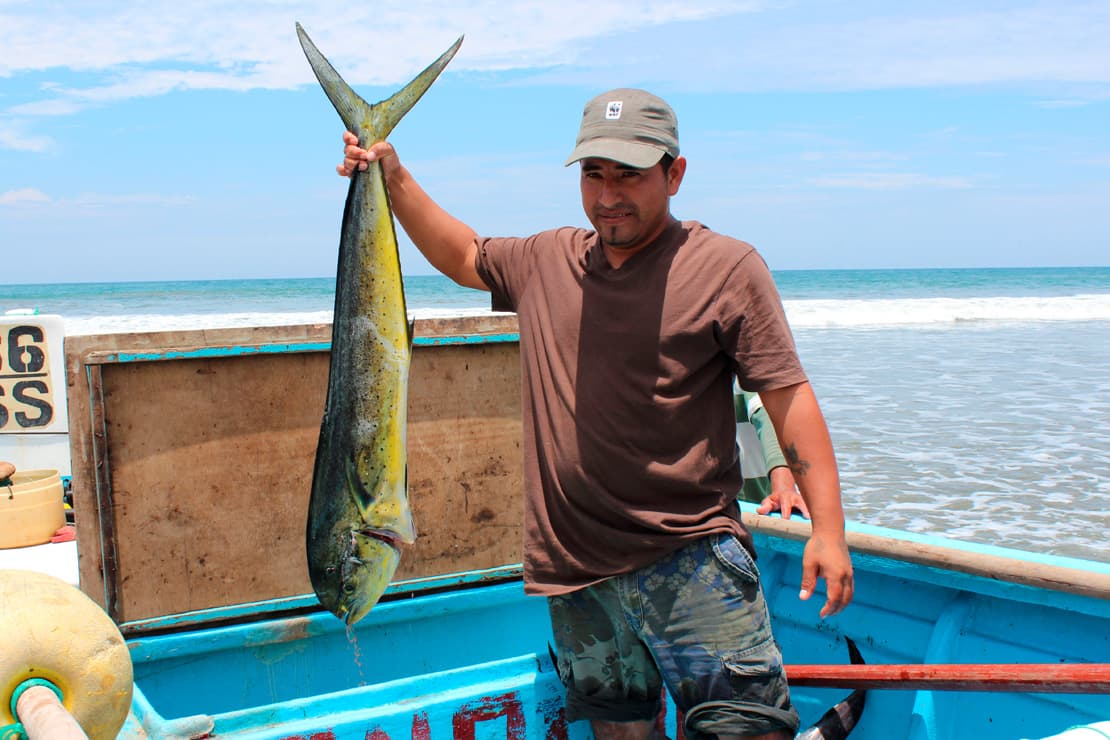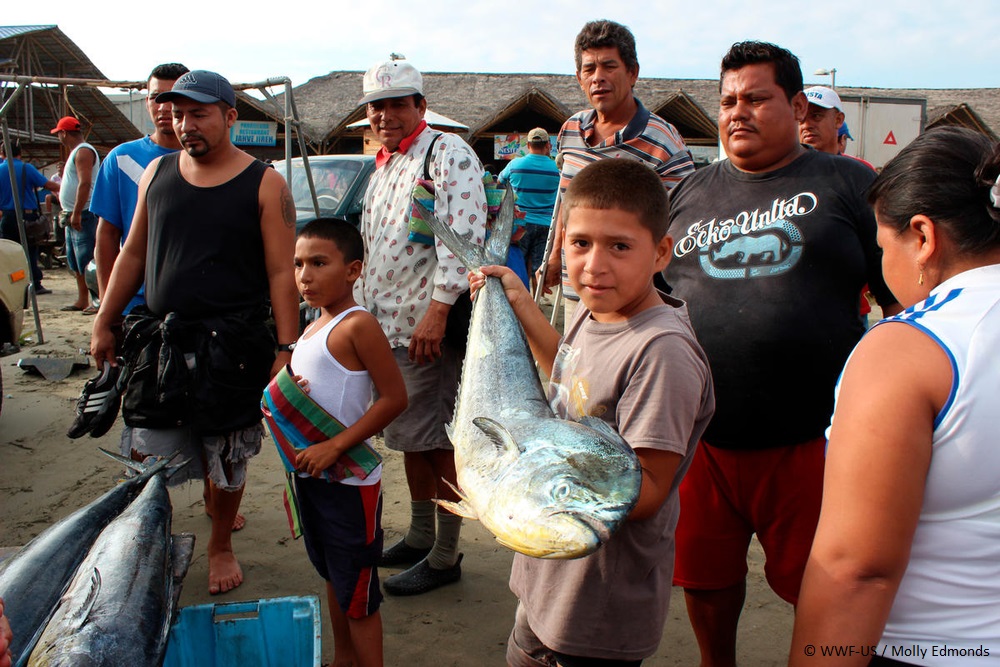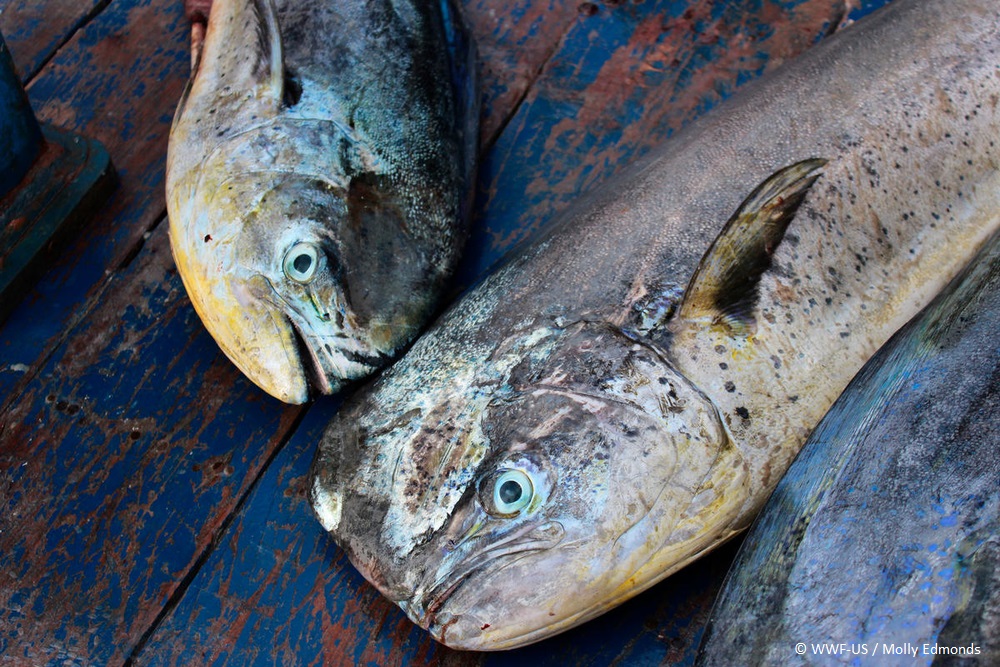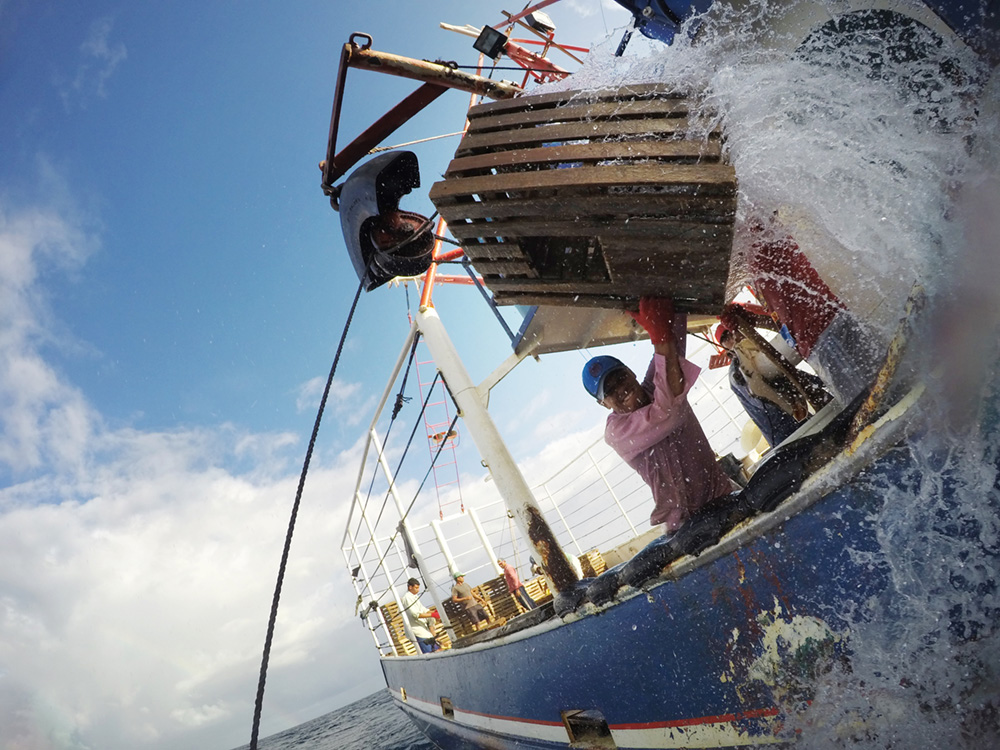Ecuador Mahi
Entered MSC Assessment: May 2023
Last Updated: September 2023
Ecuador’s mahi mahi fishery is one of its most ecologically and economically valuable artisanal fisheries. The fishery supports 25,000 fishers and 95% of its exports go to the U.S. In addition to providing nutrition for people, mahi mahi is an important part of the marine ecosystem, providing food for many top marine predators such as sharks and dolphins. Since 2010, WWF has worked closely with the Ecuadorian government and mahi mahi exporters on a comprehensive FIP to move the fishery towards MSC certification. Over that time, more than 10,000 fishers have been engaged in FIP efforts through training on fishing regulations and best fishing practices, adopting bycatch reduction tools, welcoming onboard observers, and piloting a digital traceability system to test electronic logbooks and cameras onboard their vessels.
In February 2019, the fishery entered the MSC full assessment process but had to withdraw in December 2020 due to the lack of joint management between Peru and Ecuador of the shared mahi mahi stock. In April 2021, WWF Ecuador signed an MOU with Conservation Mahi Mahi to support the reinitiating and implementation of the comprehensive mahi mahi FIP. FIP implementation led by Conservation Mahi Mahi began in May 2021, and the fishery continued to work on improvements until May 2023, when it once again entered the MSC full assessment process to achieve certification. Results of the full assessment are expected to be completed by January 2024.
This highly migratory species presents a critical challenge: the development of international management measures across countries in the eastern Pacific Ocean (EPO) to ensure that the species is fished sustainably. The fishery also needs to update its regional stock assessment regularly, improve knowledge of the fishery’s interaction with sharks, and continue to monitor and reduce sea turtle and seabird bycatch.
Since 2010, the active involvement of FIP Stakeholders, including the Ecuadorian Vice Ministry of Aquaculture and Fisheries and Under Secretary of Fishery Resources (SRP), have driven improvements in the fishery against the MSC standard.

© WWF-US / Molly Edmonds
WHAT WE ARE DOING
FIP efforts address governance, fishing practices, and environmental impacts of the fishery so that it can meet the MSC standard. This work is steered by FIP Participants and FIP stakeholders and includes:
FIP PARTICIPANTS
We encourage action across the supply chain to support FIP progress. A FIP Participant is an industry member that is part of the seafood supply chain for the FIP product and is actively engaged in supporting the FIP.
How Can I Become a FIP Participant?
A FIP Participant is an industry member that is part of the seafood supply chain for the FIP product (e.g., retailers, food service providers, suppliers, manufacturers, etc.) and is actively engaged in supporting the FIP. WWF-US encourages support of FIP participants, and will acknowledge FIP Participants on our sustainable seafood website and in other communications regarding our FIP work.
To be considered by WWF-US as a FIP Participant the participating entity is expected to follow the WWF-US FIP Participant Policy.
For more information about the specific actions you can take to become a FIP participant in the Ecuador Mahi FIP, please refer to the Ecuador Mahi Industry Ask.
PROGRESS AND ACTIVITY
The Marine Stewardship Council uses 28 performance indicators to assess the sustainability of fisheries. The chart represents the percentage of indicators that would likely pass, pass with conditions for improvement, or fail upon the fishery’s full assessment.
Ecuador Mahi FIP Status
Initial Assessment
Implementing Improvements
We use a step-wise process to evaluate the fishery’s performance and identify sustainability issues, and then to implement improvements and report results. Want to dive deeper into this FIP’s progress on each of the MSC performance indicators? Visit FisheryProgress.org.

“Plan Dorado” Secures a Future for Ecuador’s Mahi Fishery
Before WWF and its partners launched the Ecuador mahi fishery improvement project, there was good reason to question the health and sustainability of this vast and productive fishery. There was no ongoing science, so neither industry nor government had an understanding of the health of Ecuador’s mahi stocks. That all began to change when Pablo Guerrero walked into Jimmy Martinez’ office.

Mahi Mahi Exporters Promote a Sustainable Future for Ecuador’s Fisheries
The Ecuadorian mahi mahi fishery is vast and productive, but prior to 2010, there was no ongoing science that industry and government could rely on to determine the overall health of the local fish stock. A size limit to ensure juveniles are not being caught was in place, but there was no control over its application, no meaningful monitoring program, and no management plan to back it up. To promote a sustainable future for this critical fishery, Ecuador’s undersecretary of fisheries resources, in collaboration with World Wildlife Fund (WWF), launched the Ecuador Mahi Mahi Fishery Improvement Project (FIP) in 2010.
Get Involved
Become a FIP Participant
By signing on to support a FIP you are joining forces with other leaders in the industry that seek to help conserve marine ecosystems, protect livelihoods, and increase the number of sustainable fisheries and the overall supply of sustainable seafood.
 © Antonio Busiello | WWF-US
© Antonio Busiello | WWF-US



